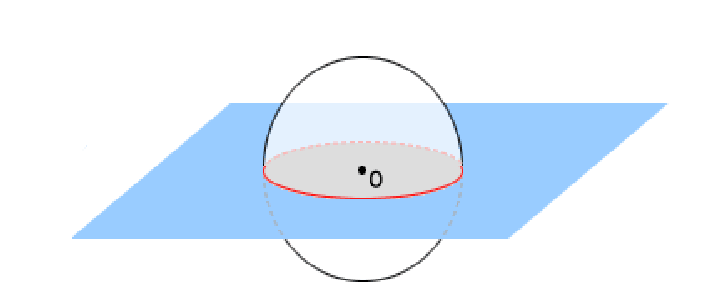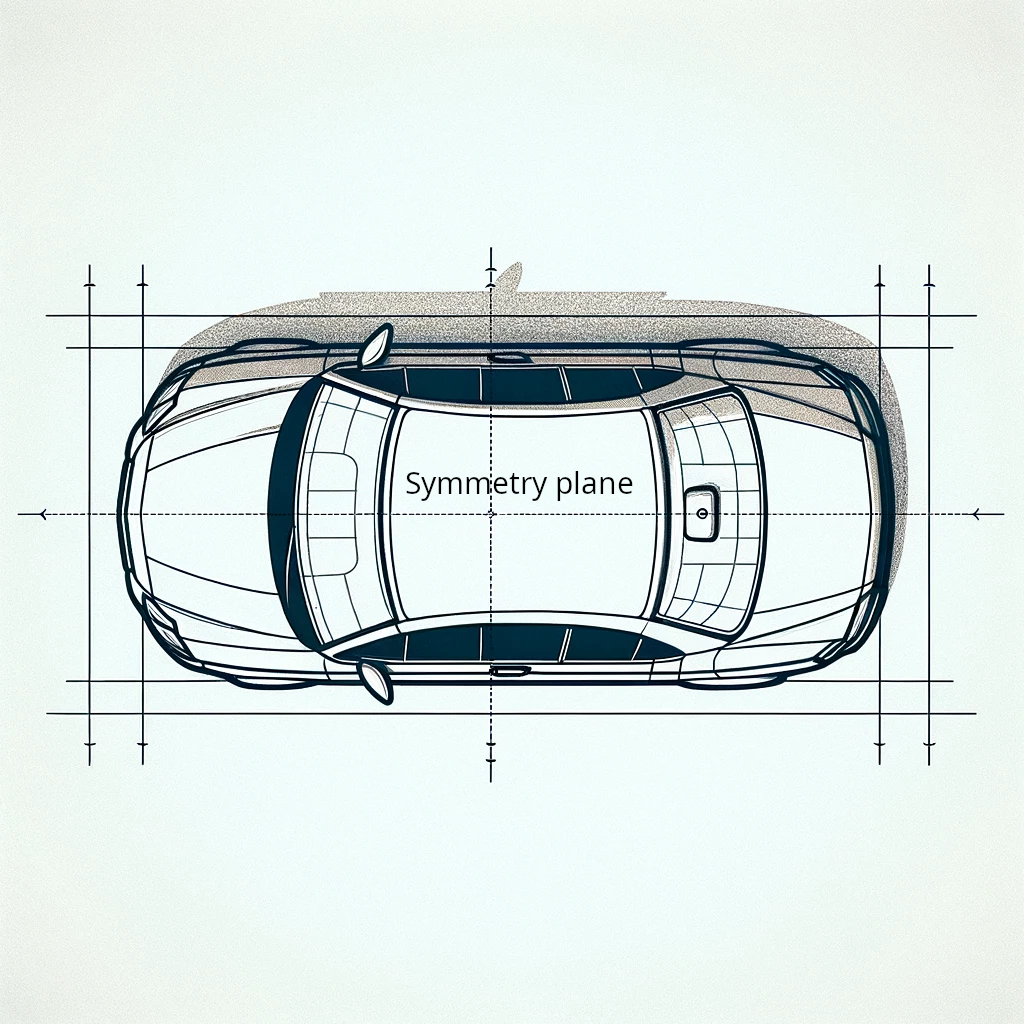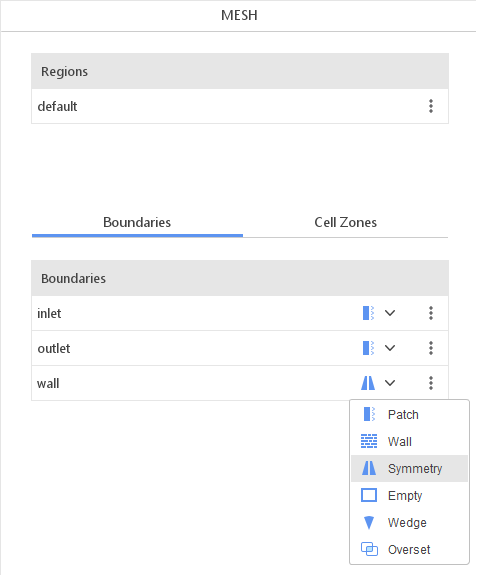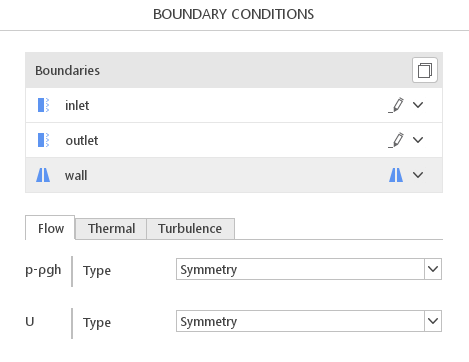Symmetry - Boundary Condition Description
Symmetry is a commonly used boundary condition in CFD simulations that models flow behavior at boundaries that exhibit symmetry. Such boundaries are typically planes or surfaces where the flow properties are mirrored or reflected. If the geometry is symmetrical, or if a symmetric flow pattern is expected, the user can take advantage of this by reducing the number of cells and, consequently, the solution time.
Mathematically, the Symmetry when applied to the vector field (e.g.: Velocity) enforces the following conditions:
- The normal vector component across the symmetry plane is equal to zero:
\(\vec n \cdot \vec U = 0\)
where, \(\vec n\) represents the normal component of velocity vector \(\vec U\) - The tangential components of velocity are preserved and the Zero Gradient condition is enforced. Effectively, the flow properties tangential to the symmetry plane remain unchanged.
When the Symmetry boundary condition is applied to the scalar field (e.g.: pressure, temperature) the Zero Gradient condition is enforced.
Symmetry - Boundary Condition Understanding Symmetry
Symmetry - Graphical Representation
Below illustration shows a sphere that is cut by a symmetry plane. Instead of modeling the flow around the entire sphere, one may model just half of the sphere (in the case of the sphere, even smaller pieces).

Any result obtained in the computational domain can be mirrored across the symmetry plane to get the complete solution. This consideration assumes the solution value is the same on both sides of the symmetry plane. The symmetry plane also has further physical implications. It must enforce the conservation of mass and momentum across the symmetry plane, preventing the flow from penetrating the symmetry plane. The same applies to any other flux, such as heat flux. Thus, this condition can be realized by enforcing a zero normal velocity component across the symmetry plane (zero convective flux) and a Zero Gradient condition for scalar fields (zero diffusive flux).
Symmetry in Car
A more practical example is the car shown in illustration above. To save computational time, only half of the car needs to be considered for CFD calculations. This approach allows for the generation of a denser mesh in critical flow regions or significantly reduces CPU time. The same principle applies to airplanes, motorcycles, or any other symmetrical objects.

Non-symmetrical pattern
It should be emphasized that the Symmetry boundary condition is applicable when both the geometry and the expected flow pattern are symmetrical. A notable example of when symmetrical geometry can generate a non-symmetrical flow pattern is the von Kármán Vortex Street.
Symmetry - Boundary Condition Application & Physical Interpretation
Symmetry boundary condition can be used when both the geometry and the expected flow pattern are symmetrical, allowing you to model only a portion of the domain and mirror the results across the symmetry plane. Symmetry always applies to all fluid parameters.
| Physics | Velocity | Pressure | Thermal T | Species | Turbulence |
|---|---|---|---|---|---|
Symmetry | Symmetry | Symmetry | Symmetry | Symmetry | Symmetry |
Symmetry in Aerodynamics applications
Example applications: car, aircraft aerodynamics, wind tunnel experiment
This problem can be solved by using simpleFoam solver. When simulating flow over an airfoil, the Symmetry boundary conditions are often utilized. Since airfoils are symmetric about their midline, it is not necessary to simulate the entire 3D domain. Instead, you can model only one-half of the airfoil and apply the Symmetry boundary conditions to replicate the behavior of the flow on the other half. This method significantly reduces computational costs while accurately capturing the aerodynamic characteristics of the entire airfoil.
| Tutorial | Description |
|---|---|
External aerodynamic analysis based on the car example. The simulation case includes symmetry conditions and turbulence modeling. |
Symmetry in Symmetrical Components applications
Example applications: propellers, turbine blades
You can use the symmetry condition on many different planes. This is used in the analysis of propellers and turbine blades, allowing you to save time by simulating a cyclically symmetrical section of geometry.
| Tutorial | Description |
|---|---|
Consider a quarter of a propeller using double symmetry, create a 'Cell Zone' for the rotating zone, and introduce pseudo rotation with the MRF model for efficient steady-state simulation. |
Duct and Pipe Flow
Unsteady, incompressible problems related to ducts and pipes can be solved using the pimpleFoam solver. By modeling only one-half or a portion of the symmetric duct or pipe and applying the Symmetry boundary condition, one can simulate the entire flow field while significantly reducing the computational domain size.
Symmetric Flow Configurations like jets, nozzles
In certain flow configurations, such as symmetric jets or wakes, the Symmetry boundary conditions can be employed. By simulating only a portion of the symmetric flow field, the behavior of the entire symmetric flow can be captured while saving computational resources.
Symmetry - Boundary Condition Symmetry in SimFlow
The definition of boundary conditions in SimFlow is both simple and intuitive. To define the Symmetry boundary condition in SimFlow, the User must select the proper type of the boundary in the MESH panel.

In the Boundary conditions panel, for all variables, the Symmetry boundary condition will be already selected.

Symmetry - Boundary Condition Symmetry - Alternatives
In this section, we propose boundary conditions that are alternative to Symmetry. While they may fulfill similar purposes, they might be better suited for a specific application and provide a better approximation of physical world conditions.
| Boundary Condition | Description |
|---|---|
Slip | works exactly the same as the Symmetry boundary condition. It can be used directly on the wall boundaries, in contrast to Symmetry which needs to be applied on the boundary of type symmetry, defined in the Mesh tab in SimFlow |
belongs to the Neumann boundary conditions, sets the normal gradient of any variable to zero |